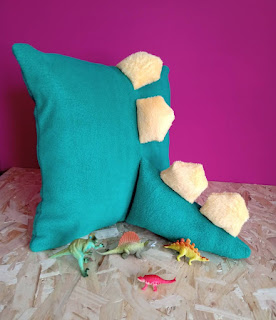Green Tea - Adventures in Natural Dyeing
As part of a potential collaboration with a local tea blender, I thought I would look into dyeing with green tea, to see if a green tone was possible to produce on wool.
I purchased inexpensive green tea bags from Lidl to use as the dye stuff, and had my own mordants/modifiers at home.
The basic ingredients of these dye baths are:
- green tea bags
- 10g 75% merino/25% nylon sock yarn.
- filtered water (our tap water is highly chalky which changes the PH).
Version 1:
4 tea bags per 10g 75% merino/25% nylon sock weight yarn in filtered water, plus a pinch of Alum and a pinch of Cream of Tartar. Half a drop of chrome modifier was added to the bath in the last 15 minutes of simmering.
This produced a very basic and unspectacular yellowy-brown, which I thought had potential to become greener, so I tried adding more mordant and modifier to the same basic ingredients in the hope that this would bring the green out.
Version 2:
4 tea bags per 10g 75% merino/25% nylon sock weight yarn in filtered water, plus 2 tads of Alum. 2 tads of copper modifier were added to the bath in the last 15 minutes of simmering.
This combination produced an even darker brown than my first attempt, more of a warmer mid-brown. I thought that the reddy-brown elements of the dye might be overwhelming the potential green tones so I tried reducing the amount of green tea in the dye bath.
Version 3:
2 teabags per 10g 75% merino/25% nylon sock weight yarn in filtered water. No Alum. Half a teaspoon of weak homemade copper modifier was added to the bath in the last 15 minutes of simmering.
This dye bath was similar to V2 except that I used half the tea (2 bags) and no alum, as sometimes this can actually lighten/yellow the finished colour. Normally no alum would make a colour far less light/wash fast, but tea has its own mordant properties so the long term colour fastness should be insignificant.
This produced a light brown that was very similar to V1 with still no hint of green.
When I looked into green teas, I found that green tea and black tea come from the same plant (camellia sinensis) and what makes tea leaves green or black (or indeed yellow and 'white') are the way they are dried. Black tea leaves are oxidised during the drying process, which gives then the dark colour and contributes to their flavour and aroma. If you think about how apples and avocados darken when they are cut and exposed to air this makes complete sense.
Green tea is gently dried without exposure to air so retains its original green colour. Think about how apples inside a pie don't go brown because they are sealed in with limited oxygen. Green tea leaves are generally treated more gently than black tea, so a lower temperature water (say 60 degrees instead of boiling) is used in the drink making process.
For other tea varieties the oxidisation process is started, stopped or otherwise controlled depending on the desired result for tea drinking purposes..
All these teas come from the leaves of one plant, the camellia sinensis. Which in natural dye terms means that it is the same ingredient. Logically the likelihood of producing dramatically different colours from the same dye ingredient are unlikely, and most of us who dye with fresh plants know that the first thing to go is the green chlorophyll tone in the leaves or stalks once the water gets near temperatures needed to fix dye molecules to wool.
So for the moment I think it is unlikely that I will get green tones from green tea bags as a dye stuff. I might look into this again in the future, but for now brown tones seem the most likely result.







Comments
Post a Comment